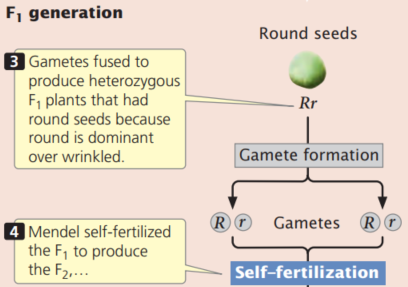Deck 2: Basic Principles of Heredity
Question
Question
Question
Question
Question
Question
Question

Unlock Deck
Sign up to unlock the cards in this deck!
Unlock Deck
Unlock Deck
1/7
Play
Full screen (f)
Deck 2: Basic Principles of Heredity
1
Gregor Mendel put forth the basic principles of inheritance, publishing his findings in 1866. The significance of his work did not become widely known until 1900.
-Which of the following factors did not contribute to Mendel's success in his study of heredity?
A) His use of the pea plant
B) His study of plant chromosomes
C) His adoption of an experimental approach
D) His use of mathematics
-Which of the following factors did not contribute to Mendel's success in his study of heredity?
A) His use of the pea plant
B) His study of plant chromosomes
C) His adoption of an experimental approach
D) His use of mathematics
His study of plant chromosomes
2
Each phenotype results from a genotype developing within a specific environment. The alleles of the genotype, not the phenotype, are inherited.
-Distinguish among the following terms: locus, allele, genotype, and phenotype
-Distinguish among the following terms: locus, allele, genotype, and phenotype
A locus is a place on a chromosome where genetic information encoding a character is located. An allele is a copy of a gene that encodes a specific trait. A genotype is the set of alleles possesed by an individual organism, and a phenotype is the manifestation or appearance of a character.
3
The principle of segregation states that each individual organism possesses two alleles that can encode a characteristic. These alleles segregate when gametes are formed, and one allele goes into each gamete. The concept of dominance states that, when the two alleles of a genotype are different, only the trait encoded by one of them-the "dominant" allele-is observed.
-How did Mendel know that each of his pea plants carried two alleles encoding a characteristic?
-How did Mendel know that each of his pea plants carried two alleles encoding a characteristic?
Because the traits for both alleles appeared in the F2 progeny
4
 The Punnett square is a shorthand method of predicting the genotypic and phenotypic ratios of progeny from a genetic cross.
The Punnett square is a shorthand method of predicting the genotypic and phenotypic ratios of progeny from a genetic cross.-If an F1 plant depicted in Figure above is backcrossed to the parent with round seeds, what proportion of the progeny will have wrinkled seeds? (Use a Punnett square.)
A) 3/4
B) 1/2
C) 1/4
D) 0

Unlock Deck
Unlock for access to all 7 flashcards in this deck.
Unlock Deck
k this deck
5
The multiplication rule states that the probability of two or more independent events occurring together is calculated by multiplying their independent probabilities. The addition rule states that the probability that any one of two or more mutually exclusive events occurring is calculated by adding their probabilities.
-If the probability of being blood-type A is 1/8 and the probability of blood-type O is 1/2, what is the probability of being either blood-type A or blood-type O?
A) 5/8
B) 1/2
C) 1/8
D) 1/16
-If the probability of being blood-type A is 1/8 and the probability of blood-type O is 1/2, what is the probability of being either blood-type A or blood-type O?
A) 5/8
B) 1/2
C) 1/8
D) 1/16

Unlock Deck
Unlock for access to all 7 flashcards in this deck.
Unlock Deck
k this deck
6
The principle of independent assortment states that genes encoding different characteristics separate independently of one another when gametes are formed, owing to the independent separation of homologous pairs of chromosomes in meiosis. Genes located close together on the same chromosome do not, however, assort independently
-How are the principles of segregation and independent assortment related and how are they different?
-How are the principles of segregation and independent assortment related and how are they different?

Unlock Deck
Unlock for access to all 7 flashcards in this deck.
Unlock Deck
k this deck
7
Differences between observed and expected ratios can arise by chance. The goodness-of-fit chi-square test can be used to evaluate whether deviations between observed and expected numbers are likely to be due to chance or to some other significant factor.
-A chi-square test comparing observed and expected progeny is carried out, and the probability associated with the calculated chi-square value is 0.72. What does this probability represent?
A) Probability that the correct results were obtained
B) Probability of obtaining the observed numbers
C) Probability that the difference between observed and expected numbers is significant
D) Probability that the difference between observed and expected numbers could be due to chance
-A chi-square test comparing observed and expected progeny is carried out, and the probability associated with the calculated chi-square value is 0.72. What does this probability represent?
A) Probability that the correct results were obtained
B) Probability of obtaining the observed numbers
C) Probability that the difference between observed and expected numbers is significant
D) Probability that the difference between observed and expected numbers could be due to chance

Unlock Deck
Unlock for access to all 7 flashcards in this deck.
Unlock Deck
k this deck



